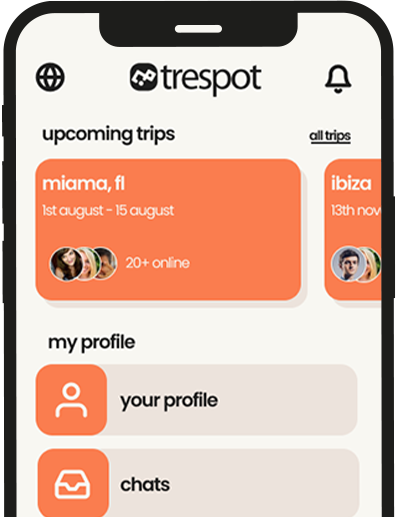Travel on a Budget Tips: 27 Proven Ways (2025 Playbook)
See more, spend less & travel smarter—PPP, FX, micro‑investing, rewards stacking, work exchanges & more.

We reviewed recent high-ranking guides from NerdWallet, Nomadic Matt, Lonely Planet, Investopedia, and more. They nail early planning, rewards, and classic budgeting advice—yet often miss fresh 2025 angles: PPP & FX-driven destination selection, micro‑investing trip funds, and our Price‑Per‑Hour‑of‑Joy (PPHJ) metric to cut expensive, low-joy spends.
- NerdWallet: great on rewards & planning but light on PPP/FX arbitrage.
- Nomadic Matt: exhaustive field-tested tactics; less on fintech automations.
- Lonely Planet: practical structuring; fewer modern fintech hacks.
- Investopedia: budgeting frameworks; less backpacker-specific detail.
- Worldpackers: strong on work exchanges; underplays stacking with points/cashback.
Below, you’ll find everything those articles do well—plus the missing layers travelers need in 2025.
Table of Contents
- Plan Early — and Flexibly (the Winning Combo)
- Pick Destinations by PPP, FX Swings & 2025 “Value Indexes”
- Flight Hacking 2.0: Alerts, Points, Flex Calendars & Error Fares
- Sleep Cheap, Sleep Smart: Hostels, Housesitting, Night Buses & Points
- Eat Like a Local: Markets, Lunch Menus, Cooking, and Street Food Hygiene
- Move for Less: Public Transit, Rail Passes, Rideshares, and Slow Travel
- Free (or Nearly Free) Fun: Museums, Passes, Free Tours & Nature
- Money Tech Stack: No-Fee Cards, DCC Traps, Micro‑Investing & Alerts
- Community Leverage: Work Exchanges, Volunteering & Social Travel Networks
- Budget Ethically & Safely (Because Cheap Shouldn’t Mean Careless)
- Quick Takeaways
- FAQs
- Conclusion
- References
If you think globetrotting automatically equals draining your bank account, think again. This guide compiles the most current, field-tested travel on a budget tips—from choosing PPP-friendly destinations to micro‑investing spare change into airfare, along with no‑fee banking stacks, work exchanges, and smart flight search tactics that top-ranking sites often gloss over. We synthesized advice from trusted sources like Nomadic Matt, NerdWallet, Lonely Planet, and Investopedia, plus fresh 2025 data points (like where your currency goes furthest this year).
By the end, you’ll know how to plan, where to go, how to pay (less), and what to skip—without sacrificing comfort or experiences. And because your time is as precious as your money, you’ll also learn to apply our Price‑Per‑Hour‑of‑Joy heuristic to cut wasteful spend while increasing the memories you actually care about. Ready to see more, spend less, and travel smarter? Let’s dive in.
1) Plan Early — and Flexibly (the Winning Combo)
What competitors say: “Plan in advance.” True—but pairing early planning with flexible timing and routing is where the real savings compound. Start 3–6 months ahead for long-haul flights, use Google Flights’ calendar view to spot trough prices, and set fare alerts across multiple platforms. Build a “range” budget (best-, base-, worst-case) so you can pounce on deals without second-guessing affordability.
The Range Budget (Unique Insight)
- Base budget: What you can safely afford.
- Stretch budget: +10–15% buffer for once-in-a-lifetime opportunities.
- Cut budget: The minimum viable spend if prices spike.
Practical Stack
- Google Flights / Skyscanner “Everywhere” search to let price decide your destination.
- Hopper/Kiwi alerts for multi-city price drops.
- Calendar-based PTO: Negotiate flexible PTO so you can depart when fares dip (often Tue-Wed or shoulder seasons).
- Lock expensive “fixeds” first (international flights, festival passes), then fill with low-cost, cancellable stays.
2) Pick Destinations by PPP, FX Swings & 2025 “Value Indexes”
The quickest way to travel on a budget is to choose places where your money is worth more. This year, lists of best-value destinations include Laos, Vietnam, Bolivia, parts of Eastern Europe, and select African gems like The Gambia — driven by favorable exchange rates and low on-the-ground costs. Many travelers also report that SEA + Argentina continue to deliver best bang-for-buck.
How to Do It Smartly
- PPP filter: Use Big Mac Index / cost-of-living aggregators to filter destinations by spend efficiency.
- FX alerts: Track target currencies you’ll spend in (e.g., ARS, THB, VND) to catch favorable movements.
- Off-peak choices: Even in Europe, try Vilnius, Lisbon, Prague off-peak.
Unique Insight — “Destination Barbell”
Pair a low-cost base (e.g., Hanoi) with a short, calculated splurge (e.g., Siem Reap boutique stay), keeping your average daily spend low while still enjoying a premium segment.
3) Flight Hacking 2.0: Alerts, Points, Flex Calendars & Error Fares
Use alerts, flexible routes, and transferable points to hammer down flight costs. Consider open-jaw tickets, multi-city routes, and positioning flights to cheaper hubs before continuing on low-cost carriers.
Tactics
- “Everywhere” + “Flexible dates” in Google Flights to catch systemic dips.
- Mistake-fare newsletters & Telegram groups.
- Stack: Airline portal bonuses + transferable points currencies (e.g., AmEx MR, Chase UR) for higher redemption values.
- Positioning flights: Fly to a cheaper hub (e.g., KUL) to unlock cheap regional hops.
- 24-hour cancellation rules (varies by airline/country) to lock and optimize.
Unique Insight — Value of Time-to-Book Metric
Measure how often a route’s prices spike or drop in your alert history. The more volatile, the faster you should act when a deal appears.
4) Sleep Cheap, Sleep Smart: Hostels, Housesitting, Night Buses & Points
Beyond classic hostels, consider housesitting/pet-sitting (often free accommodation), night buses/sleeper trains (save a night’s accommodation), and split stays (start with points hotel, then switch to cheaper options).
Options
- Modern hostels with coworking & free events.
- Housesitting platforms for zero-cost accommodation.
- Night transport to skip a hotel night.
- Monthly rentals (negotiate 10–40% off for ≥ 28 days).
Unique Insight — Sleep as a Budget Lever
Splurge on arrival (comfort, safety), then scale down once acclimated and confident.
5) Eat Like a Local: Markets, Lunch Menus, Cooking, and Street Food Hygiene
Street food + markets = massive savings (and flavor). Go where locals go, cook one meal daily in hostel kitchens, and rely on lunch specials/menu del día for multi-course value.
Playbook
- Lunch specials in Europe often €8–€12 for multiple courses.
- Markets > tourist restaurants.
- Cook once daily (breakfast or dinner) to slash costs.
- Hygiene heuristic: long local lines, high turnover, cooked-to-order.
Unique Insight — Cost per Nutrient
Track protein/veggie-rich local staples (banh mi with eggs, dal bhat, feijoada) with best price-per-calorie & satiety.
6) Move for Less: Public Transit, Rail Passes, Rideshares, and Slow Travel
Use rideshare boards (BlaBlaCar), city bike schemes, intercity coaches (FlixBus, Megabus), and public transit day/weekly passes. Slow travel pays: fewer transfers, bigger accommodation discounts.
Strategies
- Transit day passes for heavy sightseeing days.
- Weekly passes for slow travelers.
- Run the math on Eurail/Interrail vs low-cost carriers + buses.
- Cluster attractions by neighborhood to slash transit costs.
Unique Insight — The Transit Cap Rule
Some cities cap daily/weekly spend (e.g., London). Once you hit the cap, rides after are effectively free.
7) Free (or Nearly Free) Fun: Museums, Passes, Free Tours & Nature
Free walking tours, city passes, museum free nights, parks, hikes, urban trails, beaches: stack them. University events & libraries often host free/low-cost cultural programs and even attraction day passes.
Unique Insight — “Price‑Per‑Hour‑of‑Joy” (PPHJ)
Estimate hours of joy per activity and divide by cost. Quickly find overpriced must-dos and high-ROI free gems.
8) Money Tech Stack: No-Fee Cards, DCC Traps, Micro‑Investing & Alerts
Build a smart fintech stack: no‑FX/no‑ATM-fee cards, avoid DCC (always pay in local currency), and micro‑invest spare change into a dedicated travel fund.
Build Your Stack
- No‑FX cards (0% foreign transaction fees).
- No-fee ATM cards (country-dependent; research what’s available to you).
- Pay in local currency to dodge DCC markups.
- Micro‑investing apps: round-ups to fund flights.
- Automated sinking fund: weekly auto-transfer “coffee money” into high-yield savings named “Flights”.
- Multi-currency wallets to lock favorable FX rates pre-trip.
Unique Insight — “Fee Audit Day”
Once a year, audit your bank/card fees. If you’ve paid >1% of your last trip’s budget in fees, switch providers.
9) Community Leverage: Work Exchanges, Volunteering & Social Travel Networks
Work exchanges (hostels, eco-farms, NGOs) reduce costs & deepen culture. Couchsurfing/BeWelcome brings free stays + insight. Free walking tours/hostel events help you split taxis/tours and save more.
Playbook
- Work exchange platforms for safe, reviewed gigs.
- Couchsurfing/BeWelcome to meet locals.
- Slowmad communities & coworking hostels for long-stay deals, shared cooking costs.
Unique Insight — Social Arbitrage
Use your network to arbitrage expensive experiences (e.g., chartering a boat becomes cheap when you fill all seats via hostel/travel chats).
10) Budget Ethically & Safely (Because Cheap Shouldn’t Mean Careless)
Saving is great—but respect local wages & tipping norms, support community-based tourism, and consider travel insurance. Don’t force discounts that undermine local livelihoods.
Guidelines
- Tip appropriately where custom.
- Buy direct from locals (homestays, markets, co-ops).
- Avoid overtourism peaks, visit in shoulder seasons.
- Travel insurance protects you against budget-obliterating emergencies.
Unique Insight — The “True Cost” Test
If everyone bargained like you, would locals still offer this service next year? If not, pay a little more—the experience’s sustainability depends on it.

Quick Takeaways
- Plan early, travel flexibly: combine advance research with date/route flexibility.
- PPP & FX decide value: 2025 winners include Laos, Vietnam, Bolivia, Eastern Europe, SEA, and Argentina.
- Stack rewards + mistake fares for the lowest net cost on flights and hotels.
- Sleep smart: hostels + housesitting + night transport = deep accommodation savings.
- Fintech stack: no-fee cards, avoid DCC, micro‑invest spare change into your travel fund.
- Community leverage: work exchanges, group tours, and travel communities reduce per-person costs.
FAQs
Conclusion
Budget travel isn’t about deprivation—it’s about precision. The biggest wins come from choosing destinations where your money goes further, front-loading your planning, and automating your savings and rewards so the “discipline” part happens in the background. Add in community leverage (work exchanges, rideshares, hostel networks) and value-based decision tools (PPP, FX alerts, Price‑Per‑Hour‑of‑Joy) and you’re suddenly traveling more often, for longer, and with richer experiences.
Most top-ranking guides agree on the fundamentals—plan early, avoid peak seasons, use public transit, and cook meals—but 2025 demands extra layers: micro‑invest your spare change, track currency swings, and mix slow travel with strategic splurges to maximize memory per rupee/dollar spent. Put these travel on a budget tips into a checklist and you’ll have a repeatable playbook for every trip—whether it’s a ₹20,000 weekend or a six-month round-the-world. Ready? Pick your value destination, set your alerts, and start moving money (and yourself) smartly.
We’d Love Your Hack!
What’s your #1 underrated budget hack that saved you the most money—and improved your trip? Drop it in the comments! If this helped, share it with your travel crew (or that friend who says, “I wish I could travel, but it’s too expensive”). Let’s crowdsource even more ways to see the world for less.
References
- Nomadic Matt — How to Travel on a Budget
- NerdWallet — How to Travel on a Budget for Beginners
- Lonely Planet — How to travel anywhere on a budget
- Investopedia — How To Travel on a Budget
- Worldpackers — Cheap ways to travel: 12 hacks
- Reddit r/TravelHacks — 2025 biggest bang for your buck destinations
- Travel Insured — How to Plan a Trip on a Budget
- The Times — Best affordable holiday destinations for 2025


